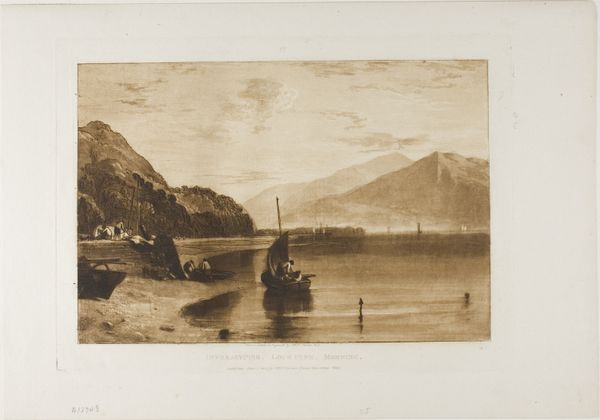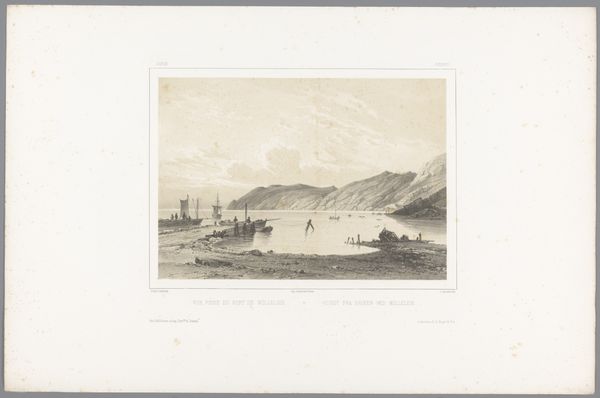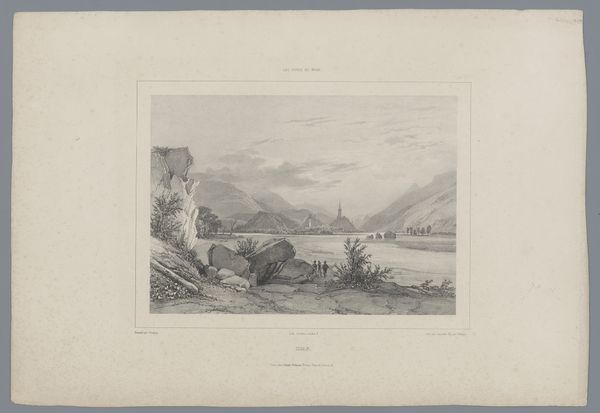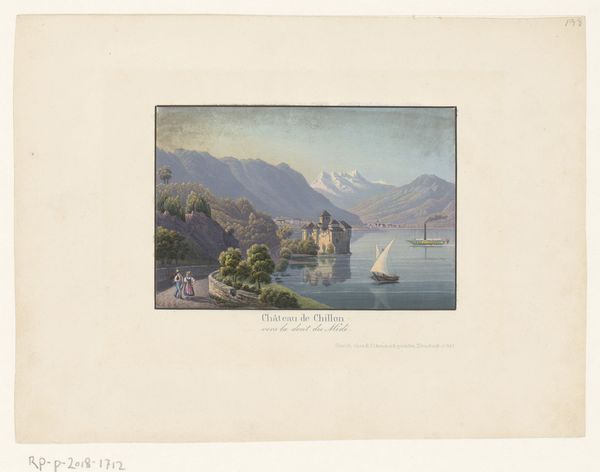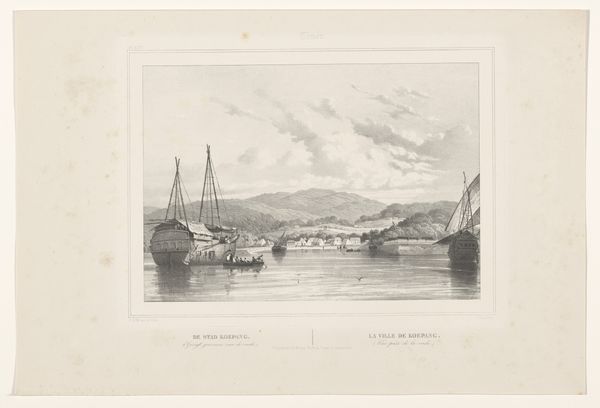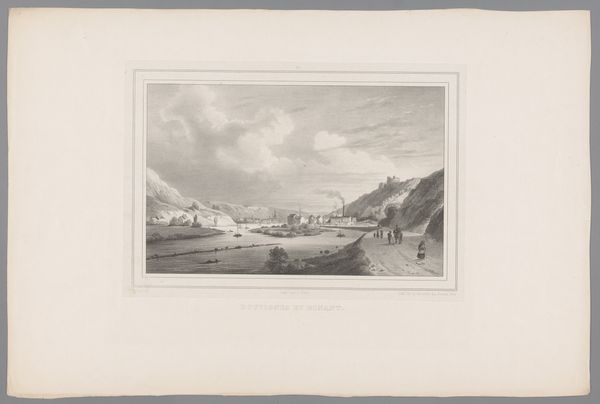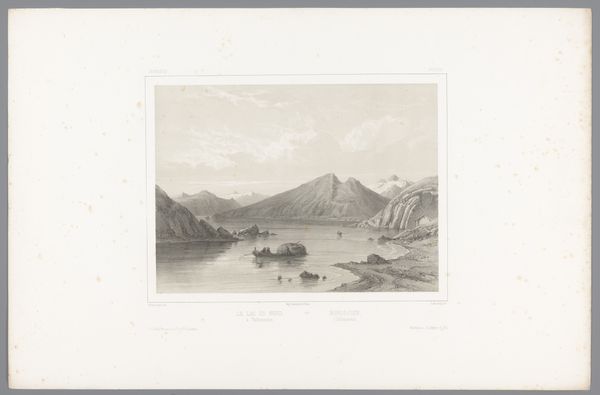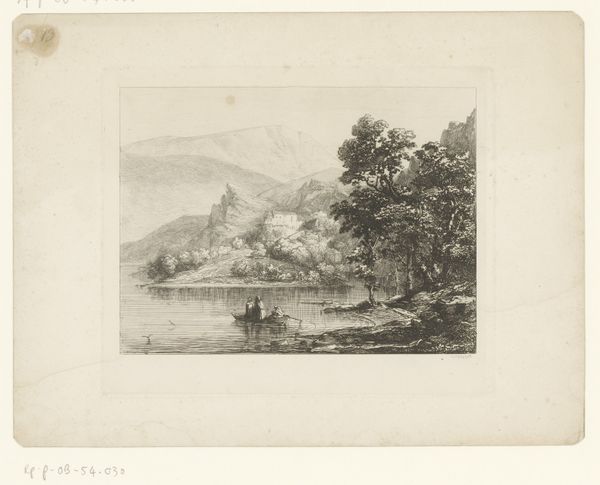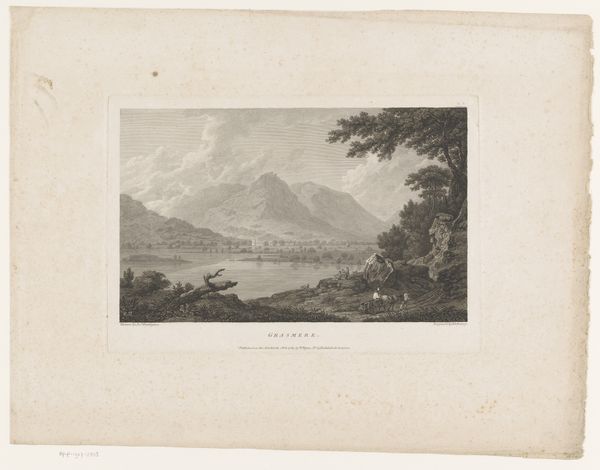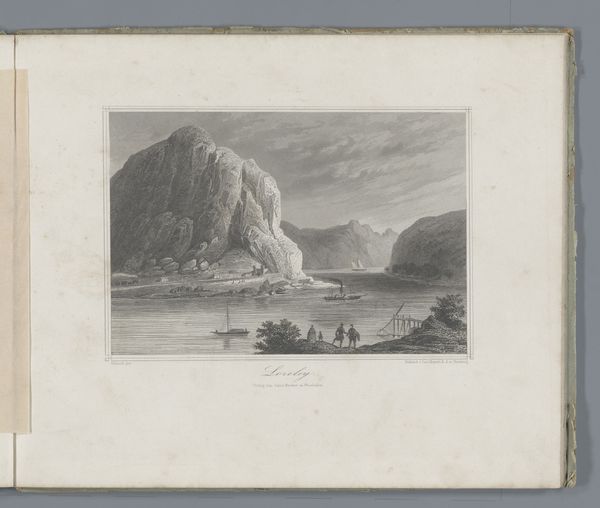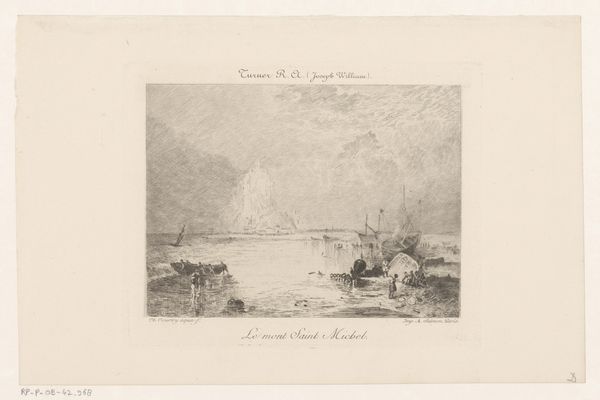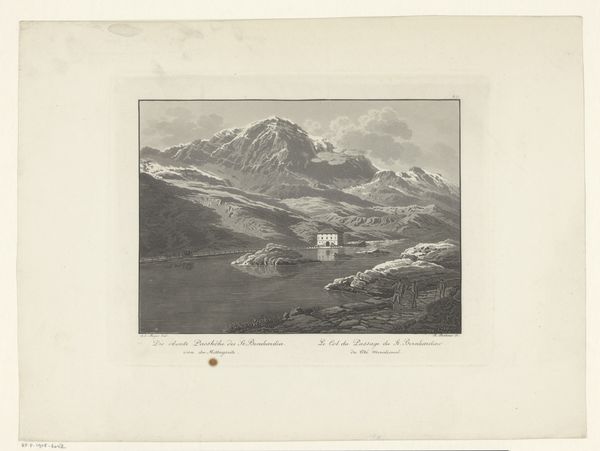
lithograph, print
#
16_19th-century
#
lithograph
# print
#
landscape
#
realism
Dimensions: 139 mm (height) x 182 mm (width) (billedmål)
Curator: Lars Møller’s “Ivigtût”, a lithograph from between 1869 and 1871, presents a somewhat austere landscape. What strikes you immediately? Editor: There’s a stillness, almost a melancholic silence, despite the presence of a ship and buildings. The grayscale and precise lines evoke a sense of cold remoteness. Curator: Indeed. The image depicts the cryolite mine in Ivigtût, Greenland. This town became significant for its rich cryolite deposits, a crucial component for aluminum production. Look closely at how Møller captured this location; it provides visual insights into the socio-economic dynamics of the 19th century and labor, through its depictions of industry embedded within the environment. Editor: And yet, I can't shake the impression that the landscape itself is the main subject. The mountain range is stark and majestic; the ship provides a focal point through linear perspective. These compositional choices seem to emphasize humanity’s small place against the backdrop of a seemingly infinite Nature. Curator: While Møller worked from photographs to create this image, he undeniably shaped the viewer's perception of Greenland through his lithographic process. Consider the manual labor involved in printmaking at this time – the physical work in creating such detailed prints that would have made this environment and labor accessible to larger audiences. The image serves to convey this sense of progress but from a very specific production lens. Editor: True, we must keep in mind the intended viewership. There is the use of monochromaticism, as opposed to color, the medium’s graphic capabilities lend themselves well to documenting details of geographical structure. The shading also seems specifically intended to capture certain qualities of reflected light that provide spatial organization, enhancing this perception of great depth. Curator: To understand its importance fully, you’ve got to look into the specifics of its use and mass production. The medium matters just as much as the content itself; this print speaks of a world being consumed as much as beheld. Editor: Fair enough. Analyzing the technical aspects provides critical insight into the era's ethos that may not always be transparent through immediate stylistic evaluation. Thanks! Curator: A productive analysis of material conditions, thank you!
Comments
No comments
Be the first to comment and join the conversation on the ultimate creative platform.
